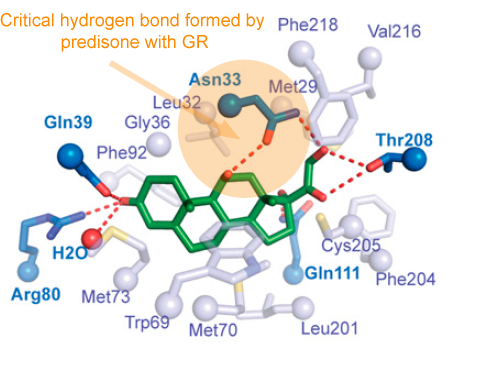Steroid anti-inflammatory drugs such as dexamethasone and prednisone are widely used to treat conditions such as allergies, asthma, autoimmune diseases, cancer – and now, COVID-19. Yet they can have harmful side effects on the skin, bones and metabolism.
The side effects are thought to come from a molecular mechanism that is separate from the anti-inflammatory one, and scientists have envisioned that it may be possible to divide the two. A new paper in PNAS from Emory biochemist Eric Ortlund’s lab sketches out how one potential alternative may work.
Synthetic corticosteroids mimic the action of the stress hormone cortisol; both bind the glucocorticoid receptor (GR) protein. Ortlund’s group obtained structural information on how vamorolone, an experimental drug, sticks to the part of GR that binds hormones.
The American company ReveraGen and Swiss partner Santhera are developing vamorolone for Duchenne muscular dystrophy, but it is possible to envision several other conditions such as ulcerative colitis for which vamorolone or a similar drug could be helpful. Vamorolone is NOT approved by the FDA for Duchenne muscular dystrophy or any other indication.

As far as its interaction with GR, what sets vamorolone apart from conventional corticosteroids is quite subtle: a missing hydrogen bond. This means that GR doesn’t interact as well with various partner proteins, which are needed to turn on genes involved in processes such as metabolism and bone growth. However, the anti-inflammatory effects result mainly from turning inflammatory and immune system genes off, and those interactions are maintained. More on that distinction here and here.
In addition to X-ray crystallography, biophysical experiments (thermal stability, deuterium exchange) showed how vamorolone destabilizes some of GR’s interactions with activator proteins but keeps others intact. The discussion notes that corticosteroids and vamorolone also target a related protein called the mineralocorticoid receptor, and more information is needed on that.
The first author is Emory postdoctoral fellow Xu Liu. Reveragen co-founders Kanneboyina Nagaraju and Eric Hoffmann are co-authors of the paper.

